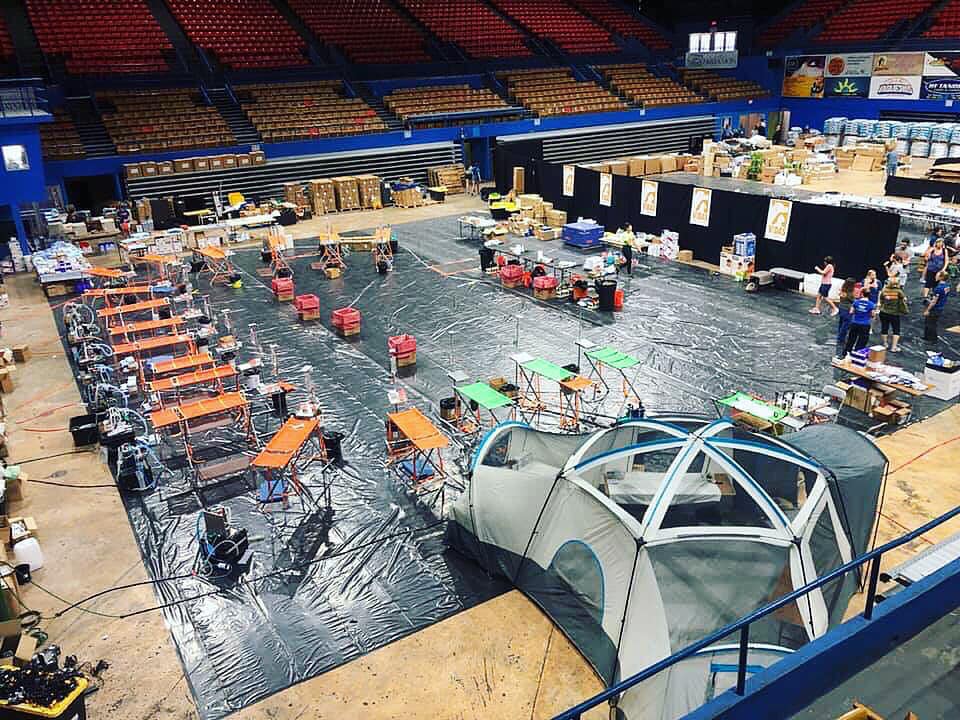Module 4: The Case of the Spay-Neuter Skeptic
Keeping the “Q” in HQHVSN in Resource-Scarce Locations
The global need for spay-neuter services is great, and not all locations have a dedicated surgery suite. Many shelter veterinarians practice in rural, pop-up, or international areas where meeting ASV Guidelines pose a greater challenge. However, resourceful veterinarians have developed ways to comply, even in locations that may lack such basics as electricity and running water.
Case Study 1: Spayathon for Puerto Rico
While the US mainland has made significant strides in improving companion animal welfare, the commonwealth island of Puerto Rico has been largely left behind. Puerto Rico suffers from crippling poverty, limited veterinary services, and a large stray dog population. Animal shelters in Puerto Rico are overcrowded and under-resourced, with euthanasia rates frequently exceeding 90%. In 2017, Hurricane Maria delivered a devastating blow to the island, causing increased emigration, pet abandonment, and stray animal suffering.
Spayathon for Puerto Rico was initiated to provide desperately needed sterilization services to address uncontrolled dog reproduction while simultaneously building local veterinary capacity and facilitating responsible pet ownership. In a collaborative effort led by the Humane Society of the United States, international organizations specializing in HQHVSN surgery paired with local animal welfare groups in simultaneous quarterly week-long, multi-site, high-volume surgical clinics for owned animals. Smaller clinic events held between the rounds target free-roaming and shelter animals. Initiated with a goal of 25,000 surgeries over one year, overwhelming demand led to an expansion to 85,000 surgeries planned over 3 years. Clinics are held in sports arenas that are temporarily converted into surgical facilities. Despite the nontraditional locations, the clinics go to great lengths to meet all standards of care, including separating the operating room from non-surgical activities, autoclaving packs, pain management, and after-hours emergency coverage.
Spayathon offers immediate impact in a region of extreme need, but long-term solutions require local capacity building. Partnerships providing hands-on surgical training for local veterinary teams and the donation of all equipment and supplies acquired for Spayathon to the Puerto Rican veterinary community at the conclusion of the campaign will support sustainability and the establishment of permanent HQHVSN clinics on the island. Field manuals developed and continuously refined for all sectors of operations including organizing staff, local ground teams, surgical teams, and general audiences are shared with the international animal welfare community to facilitate replication and impact of the Spayathon model far beyond the borders of Puerto Rico.

Case Study 2: “Spay-Neuter Tourism”
Unfortunately, not all charitable spay-neuter programs achieve appropriate standards of care and provide services communities need most. A recent issue of the AMA Journal of Ethics devoted to the topic in human medical education noted, “Programs relying on short-term fixes to long-standing infrastructure and resource deficits can exploit some of the world’s most vulnerable, poor patients.” Unethical programs often allow inadequately trained volunteers to represent themselves as skilled practitioners, to perform procedures they could not legally perform back home, abandon basic standards of care, and focus on what the volunteers want to do rather than what the greatest need is.
Find the Problems

